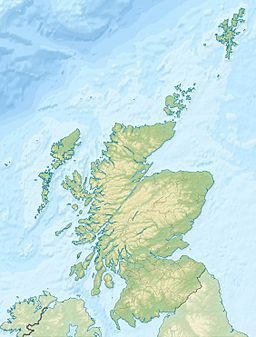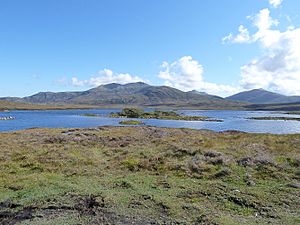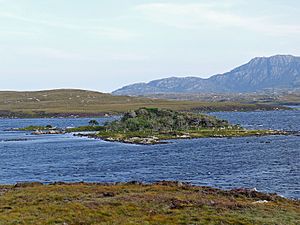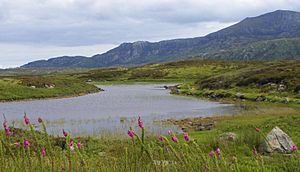Loch Druidibeg facts for kids
Quick facts for kids Loch Druidibeg |
|
|---|---|
| Location | South Uist, Outer Hebrides, Scotland |
| Coordinates | 57°18′56″N 7°19′31″W / 57.3155°N 7.3254°W |
| Type | loch |
Loch Druidibeag is a beautiful freshwater loch (which is a Scottish word for lake). It is found on the island of South Uist in the Outer Hebrides of Scotland. The loch is located near the northern part of the island. You can find it north-east of a place called Howmore. It is also east of the main A865 road and south of the B890 road.
This loch is very important for nature. It is a Site of Special Scientific Interest and a Ramsar site. This means it is protected because of its special wetlands. It is also part of a larger protected area called the South Uist Machair Special Area of Conservation. It is also part of the South Uist Machair and Lochs Special Protection Area. Loch Druidibeag used to be a National Nature Reserve (NNR). This status was removed in 2012. It was also a biosphere reserve from 1976, but this status was also removed in 2013. The local government that looks after the area is called Comhairle nan Eilean Siar.
Nature and Wildlife at Loch Druidibeag
Loch Druidibeag has many different types of natural areas. These include grassy areas called machair (which are rich in lime). It also has clear, nutrient-poor loch waters and acidic moorland. All these different areas are affected by the ocean. There is a lot of salt spray and humidity from the sea.
The area is also influenced by farming. Traditional farming methods help the machair grasslands stay rich in different plant species. The loch is carefully managed to protect its nature. Farmers are encouraged to use old ways of growing crops and grazing cattle. This helps keep the variety of plants and animals (biodiversity) healthy. Many groups work together with local people in the Uists. They do projects to protect the environment.
Trees and Plants
Before Loch Druidibeag became a National Nature Reserve, a small group of trees was planted. This was meant for a large house that was never built. These trees included lodgepole pine and Scots pine. There were also Chile pine, Norway maple, and Rhododendron ponticum.
Over time, native trees have grown there too. These include birch, alder, hazel, rowan, and aspen. This woodland is now very important for birds. Birds are not very common in other parts of the Hebrides. In the 1980s, volunteers built a fence to protect the trees from deer.
Later, a plant called Rhododendron ponticum started to spread too much. It covered large parts of the woodland and even some islands in the loch. So, a plan was made to restore the woodland. This was done to make it better for education and for people to enjoy.
Who Owns the Land?
The total area of Loch Druidibeag and its surroundings is about 1677 hectares. About 1043 hectares of this land, which includes freshwater and moorland, used to belong to Scottish Natural Heritage. They bought it in 1958.
Another 643 hectares were managed by an agreement since 1962. This land belonged to South Uist Estates and the local crofters. Crofters are people who farm small pieces of land. In 2018, the land owned by Scottish Natural Heritage was given to a local community group called Storas Uibhist. This means the local community now owns and looks after this important area.
There are also areas around the main zone that are protected. These areas extend about 10 to 15 miles north and south. They are managed in similar ways to protect nature.





